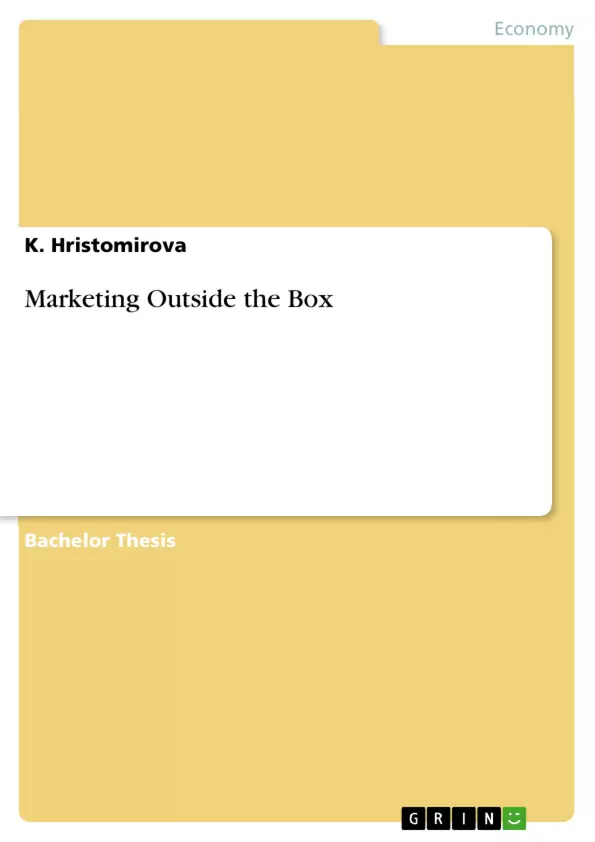Have you ever asked yourself how often you happen to zap through the TV channels during a commercial break trying to escape the information flood with only one thought in mind: “Help, commercials!”? As Ty Montague claims, “advertising is the business of interrupting what people are interested in with a commercial message about something they are not interested in.” And this is true – today’s consumer is bored to death by all the conventional publicity messages he is exposed to in his everyday life. What is more, advertising nowadays is increasingly perceived as a burden which forces consumers to try to avoid it as much as possible. Because individuals are continually faced with the well-known marketing tools, their activating and persuasive impacts start to decrease and lead to wear-out effects. This trend presents marketers with an uneasy challenge - they have to fight with their competitors and win the consumer’s attention without being intrusive. This, however, might turn out to be a difficult task because it involves a high advertising budget.
Inhaltsverzeichnis (Table of Contents)
Zielsetzung und Themenschwerpunkte (Objectives and Key Themes)
This thesis explores the concept of guerrilla marketing and its application within the broader marketing mix. The main objective is to provide a comprehensive analysis of guerrilla marketing tools and techniques, comparing them to traditional advertising methods. This analysis will demonstrate how guerrilla marketing can effectively enhance marketing strategies, particularly in today's competitive market where traditional advertising often fails to capture consumer attention.
- The evolution of the marketing concept and its definition.
- The market segmentation process and its application.
- The four P's of the marketing mix: product, price, distribution, and promotion.
- The origin, definition, and objectives of guerrilla marketing.
- The application of guerrilla marketing tools and techniques, including low-budget, offline, online, and strategic strategies.
Zusammenfassung der Kapitel (Chapter Summaries)
- Chapter 1 introduces the concept of guerrilla marketing, highlighting the challenges faced by marketers in today's consumer-driven market. It discusses the limitations of traditional advertising methods and the need for alternative approaches that can effectively reach target audiences while minimizing costs.
- Chapter 2 delves into the fundamental principles of marketing, examining its importance in the modern business landscape. It discusses the scope of marketing, encompassing both large multinational corporations and smaller entrepreneurial businesses.
- Chapter 3 focuses on the marketing mix, exploring the four key elements: product, price, distribution, and promotion. It examines each element in detail, outlining the strategies and decisions involved in each stage of the marketing process.
- Chapter 4 provides an overview of traditional advertising methods, outlining the common techniques used by marketers to reach their target audiences. This chapter explores the strengths and weaknesses of traditional advertising in the current market landscape.
- Chapter 5 delves into the concept of guerrilla marketing, examining its origins, definition, and primary objectives. It discusses the risks and potential threats associated with this approach while highlighting its potential to achieve significant impact with limited resources.
- Chapter 6 offers a comprehensive overview of various guerrilla marketing tools and techniques, categorized by their nature. This chapter explores low-budget, offline, online, and strategic approaches, providing examples and case studies to illustrate their application.
Schlüsselwörter (Keywords)
Guerrilla marketing, marketing mix, traditional advertising, low-budget marketing, offline guerrilla marketing, online guerrilla marketing, strategic guerrilla marketing, target marketing, consumer behavior, advertising effectiveness, market segmentation, marketing strategy, branding, brand awareness, product development, pricing, distribution, promotion.
- Citar trabajo
- K. Hristomirova (Autor), 2013, Marketing Outside the Box, Múnich, GRIN Verlag, https://www.grin.com/document/267593



